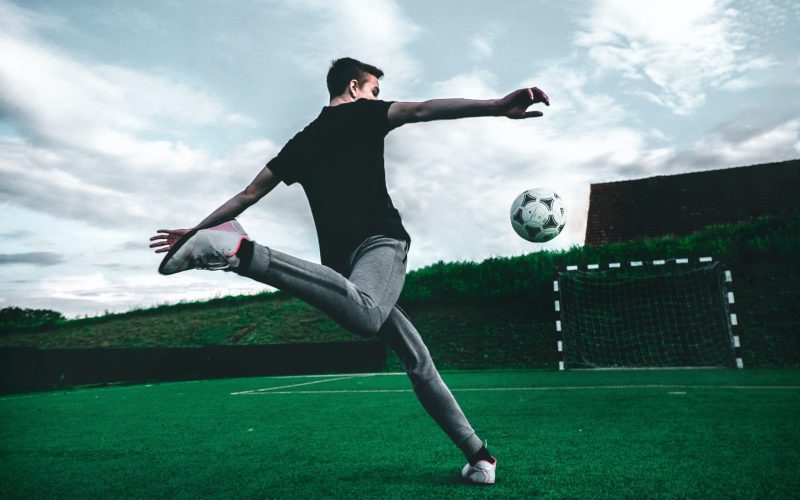Soccer is a sport that requires physical prowess, but fitness for the field extends beyond running and dribbling drills. Whether you play competitively or just for fun, staying in shape is essential for your performance. The good news is that you don’t have to be an athlete to get fit for soccer. With the right exercises and plenty of dedication, you can increase your stamina and power to make sure you’re ready to take on any team. In this blog post, we will cover the essential exercises that will help you get fit for the field—from simple bodyweight workouts to plyometric drills and strength training.
Soccer-Specific Cardio Training
Whether you’re a beginner or a seasoned player, doing soccer-specific cardio training will help improve your on-field performance. Soccer is a sport that requires quick bursts of energy, so it’s important to train your body to be able to handle that type of activity. interval training is a great way to do this.
Interval training involves alternating periods of high-intensity exercise with recovery periods. For example, you might sprint for 30 seconds, then walk for 60 seconds. You can do this on a treadmill, track, or even just out in your neighborhood. The key is to push yourself during the sprints so that your heart rate gets up and you’re breathing hard.
To make things more soccer specific, you can add in some agility drills during your intervals. For instance, after each sprint, cut sharply to the left and right before continuing on with your jog or walk. This will help train your muscles and cardiovascular system to change directions quickly, which is an important skill in soccer.
In addition to interval training, another great way to get fit for soccer is by doing long distance runs. These don’t have to be super fast; just focus on building up your endurance so that you can run for long periods of time without getting tired. Again, adding in some agility drills (such as lateral shuffles) will help transfer these benefits to the soccer field.
Strength Training for Soccer Players
Soccer is a physically demanding sport that requires players to have a high level of fitness. Strength training is an important part of any soccer player’s fitness regime.
There are many benefits to strength training for soccer players. Strength training can help to improve players’ speed, power, and agility. It can also help to reduce the risk of injuries.
Players can use a variety of methods to strength train, such as lifting weights, using resistance bands, or bodyweight exercises. It’s important to choose exercises that are specific to the demands of soccer. For example, exercises that focus on leg strength and power will be most beneficial for soccer players.
Here are some examples of strength-training exercises that soccer players can do:
- Squats: Squats are a great exercise for building lower-body strength. They can be done with or without weight.
- Lunges: Lunges are another effective exercise for strengthening the lower body. They can also be done with or without weight.
3 . Push-ups: Push-ups are a great way to build upper-body strength. They can be modified to make them easier or harder, depending on your fitness level.
4 . Pull-ups: Pull-ups are another excellent exercise for developing upper-body strength. They can be performed with or without weight
Power Training for Soccer Players
Power training is an essential part of any soccer player’s fitness regime. By developing your power, you’ll be able to run faster, jump higher, and kick the ball harder. Here are some essential power-training exercises for soccer players:
- Plyometric push-ups: These are a great exercise for developing upper-body power. To do them, start in a standard push-up position. As you lower yourself down, explosively push up off the ground so that your hands leave the ground. Return to the starting position and repeat.
- Box jumps: This exercise is great for developing lower-body power. Start by standing in front of a box or step that is about knee-height. Bend your knees and swing your arms back, then explosively jump onto the box. Step back down and repeat.
- Medicine ball throws: This exercise develops power in the arms and chest. Start by holding a medicine ball at chest level. explosively throw the ball as far as you can. Catch it and repeat.
Mobility and Flexibility Training for Soccer Players
Mobility and flexibility training are essential for soccer players in order to improve performance on the field. These exercises help to improve range of motion, increase muscle power and endurance, and reduce the risk of injury.
Static stretching is a type of flexibility training that involves holding a position for an extended period of time. This can be beneficial for soccer players as it can help to improve range of motion and reduce the risk of injury.
Dynamic stretching is another type of flexibility training that involves moving through a range of motion repeatedly. This can help to increase muscle power and endurance, which can be beneficial for soccer players.
Plyometric exercises are a type of power training that involve explosive movements. These exercises can help to increase speed, agility, and power, which can be beneficial for soccer players.
Strength training is another type of exercise that can be beneficial for soccer players. Strength-training exercises help to increase muscle mass and bone density, which can help to improve strength, power, and endurance on the field.
Soccer-Specific Conditioning Drills
Soccer-specific conditioning drills are vital for any player looking to improve their on-field performance. These exercises train the muscles and energy systems used in soccer, making you better prepared for the demands of the sport.
There are a variety of soccer-specific conditioning drills that you can do to improve your fitness. Here are a few examples:
Interval training: This type of drill involves alternating periods of high-intensity activity with periods of rest or lower-intensity activity. This is a great way to mimic the stop-and-start nature of soccer and improve your overall cardiovascular fitness.
Shuttle runs: Shuttle runs are a great way to improve your speed and agility. They involve running back and forth between two points, typically cones or other markers placed 10-20 yards apart. As you get more fit, you can increase the distance between the markers.
Ball handling drills: These types of drills help improve your ball control and coordination. They can be as simple as dribbling a ball around cones or doing more complex moves like juggling or passing between your legs.
If you’re looking to improve your fitness for soccer, these three types of drills are a great place to start. Incorporate them into your training routine and you’ll see a difference in your on-field performance in no time!
Conclusion
Soccer fitness is about more than just running and stretching; it’s about having the strength, speed, and agility needed to perform at your highest level. With these essential exercises, you can get fit for the field in no time! From developing power on both sides of your body with weighted exercises to improving flexibility with dynamic stretches, there are plenty of ways that you can take your soccer game to a whole new level. Start implementing the tips mentioned today and see how far they will take you in reaching peak performance levels when stepping onto the pitch.











